 |
King of Chemicals Manufacturers |
Specifications, Properties, Uses, SDS of Magnesium Phosphate Monobasic Dibasic Tribasic Anhydrous Trihydrate Pentahydrate USP FCC Food Grade Manufacturer Supplier Exporter Wholesale & Small Packs, CAS Number 7757-87-1 Anhydrous, 10233-87-1 Pentahydrate, 7782-75-4 Trihydrate. |
|
| King of Chemicals has several associated companies having accreditations like cGMP, GLP - FDA Approved Good Manufacturing Practice and Good Laboratory Practice of WHO standard, ISO-9001, ISO-14001, ISO/IEC 17025, ISO ISO-45000, HACCP, FSSC 220000, FSSAI, "REACH" Registered, Kosher & Halal Certified. e-CTD and DMF support can be made available if needed. We offer USP NF BP Ph Eur EP IP JP Analytical Reagent FCC Food Grade Chemicals & Nutraceuticals. | |
        |
|
Muby Chem Pvt. Ltd. is a several decades old group of companies, engaged in manufacturing, supplying, distributing, wholesale supplies of Magnesium Phosphate Monobasic Dibasic Tribasic Anhydrous Trihydrate Pentahydrate USP FCC Food Grade for actual users, including retail or small pack supplies for research and development work.
We supply fine and speciality chemicals, pharmaceutical excipients, mineral fortifiers in chemically pure, analytical reagent grade, IP BP USP Ph Eur EP JP and other pharmaceutical grade monograph including FCC Food grade chemicals and Nutraceuticals at best prices. We and/or our associated units have all the facilities to supply as per cGMP standard observing good manufacturing practice and good laboratory practice. We can assure low microbial count and also offer a test certificate for the same. We maintain warehouses across USA, India, and UAE. Our group exports to USA, Canada, Mexico, Argentina, Brazil, Chile, Korea, Malaysia, Thailand, Indonesia, Europe, and several other parts of the world. We supply in wholesale container loads to small pack of few grams. Solid products may be specified for it size and shape as desired by the buyer.


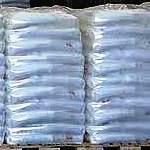
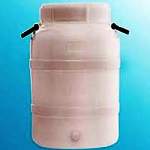
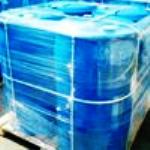
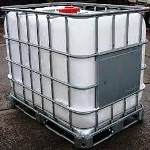
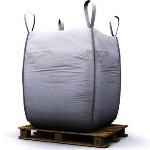
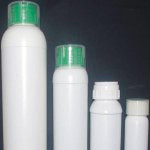
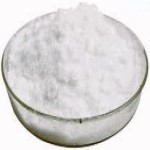
Magnesium Phosphate Monobasic Dibasic Tribasic Anhydrous Trihydrate Pentahydrate CAS Number 7757-87-1 Anhydrous, 10233-87-1 Pentahydrate, 7782-75-4 Trihydrate
For Properties Specifications Uses of Magnesium Phosphate Monobasic Dibasic Tribasic Anhydrous Trihydrate Pentahydrate Click Properties, Specifications, Uses, Price, Process of Magnesium Phosphate Monobasic Dibasic Tribasic Anhydrous Trihydrate Pentahydrate Manufacturer.
For For SDS MSDS Sheet of Magnesium Phosphate Monobasic Dibasic Tribasic Anhydrous Trihydrate Pentahydrate Click SDS Safety Data Sheet MSDS Sheet of Magnesium Phosphate Monobasic Dibasic Tribasic Anhydrous Trihydrate Pentahydrate Manufacturer.
The Properties, Specifications, Monograph and Uses of Magnesium Phosphate Monobasic Dibasic Tribasic Anhydrous Trihydrate Pentahydrate:
Magnesium Phosphate USP Grade Specifications
Mg3(PO4)2-5H2O -- 352.93
Phosphoric acid, magnesium salt (2:3), pentahydrate.
Magnesium phosphate (3:2) pentahydrate CAS 10233-87-1
Anhydrous 262.86 CAS 7757-87-1
Magnesium Phosphate, ignited at 425 to constant weight, contains not less than 98.0 percent and not more than 101.5 percent of Mg3(PO4)2.
Identification:
A: Dissolve about 200 mg in 10 mL of 2 N nitric acid, and add, drop wise, ammonium molybdate TS: a greenish yellow precipitate of ammonium phosphomolybdate is formed and it is soluble in 6 N ammonium hydroxide.
B: Dissolve 0.1 g in 0.7 mL of 1 N acetic acid and 20 mL of water. Add 1 mL of ferric chloride TS, allow to stand for 5 minutes, and filter: 5 mL of the filtrate responds to the test for Magnesium.
Microbial limits: It meets the requirements of the test for absence of Escherichia coli.
Loss on ignition: Ignite it at 425 to constant weight: it loses between 20.0% and 27.0% of its weight.
Acid-insoluble substances: If an insoluble residue remains in the test for Carbonate, filter the solution, wash well with hot water until the last washing is free from chloride, and ignite the residue: the weight of the residue does not exceed 4 mg (0.2%).
Soluble substances: Digest 2.0 g with 100 mL of water on a steam bath for 30 minutes, cool, add sufficient water to restore the original volume, mix, and filter. Evaporate 50 mL of the filtrate to dryness, and ignite gently to constant weight: the weight of the residue does not exceed 15 mg (1.5%).
Carbonate: Mix 2.0 g with 20 mL of water, and add hydrochloric acid, drop wise, to effect solution: no effervescence occurs when the acid is added.
Chloride: Dissolve 0.50 g in 50 mL of 2 N nitric acid, and add 1 mL of silver nitrate TS: the turbidity does not exceed that produced by 1.0 mL of 0.020 N hydrochloric acid (0.14%).
Limit of nitrate: Mix 0.20 g with 5 mL of water, and add just sufficient hydrochloric acid to effect solution. Dilute with water to 10 mL, add 0.1 mL of indigo carmine TS, then add, with stirring, 10mL of sulfuric acid: the blue color persists for not less than 5 minutes.
Sulfate: Dissolve 0.50 g in the smallest possible amount of 3 N hydrochloric acid, dilute with water to 48 mL, and add 2 mL of barium chloride TS: the turbidity does not exceed that produced by 3.0 mL of 0.020 N sulfuric acid (0.6%).
Arsenic:The limit is 3 ppm.
Barium: Mix 2.0 g with 40 mL of water, heat, add hydrochloric acid, drop wise, to effect solution, and then add 1 mL of acid in excess. Cool, dilute with water to 50 mL, and filter. To 5 mL of the filtrate add 1 mL of potassium sulfate TS: no turbidity is produced within 15 minutes.
Calcium: Mix 0.50 g with 15 mL of water, heat, and add sufficient hydrochloric acid, in small portions, to effect solution. Cool, add 6 N ammonium hydroxide, in small portions, to produce a slight permanent precipitate, then add 2 mL of 6 N acetic acid. Dilute with water to 25 mL, and filter. To 10 mL of the filtrate add 2 mL of ammonium oxalate TS: not more than a slight turbidity is produced within 5 minutes.
Dibasic salt and magnesium oxide: Ignite about 2.5 g to constant weight. Weigh accurately about 2 g of ignited salt, and dissolve it by warming with 50.0 mL of 1 N hydrochloric acid VS. Cool, add 1 or 2 drops of methyl orange TS, and slowly titrate the excess 1 N hydrochloric acid VS with 1 N sodium hydroxide VS to a yellow color, vigorously shaking the mixture during the titration. Between 14.8 and 15.4 mL of 1 N hydrochloric acid is consumed for each g of the ignited salt.
Lead: the limit is 5 ppm.
Heavy metals: the limit is 0.003%.
Magnesium Phosphate, Dibasic, Mixed Hydrates FCC Food Grade Specifications
MgHPO4-xH2O
DESCRIPTION Magnesium Phosphate, Dibasic, Mixed Hydrates, occurs as a white, crystalline powder that is a partially dehydrated form of a mixture of magnesium phosphate, dibasic—in the trihydrate, dihydrate, and anhydrous forms—and of magnesium pyrophosphate. It is slightly soluble in water and insoluble in alcohol, but is soluble in dilute acids.
Function: Nutrient; leavening agent; pH control agent.
REQUIREMENTS
Identification:
A. Dissolve about 200 mg of sample in 10 mL of 1.7 N nitric acid, and add, drop wise, ammonium molybdate TS. A green-yellow precipitate of ammonium phosphomolybdate forms that is soluble in 6 N ammonium hydroxide.
B. Dissolve about 100 mg of sample in 0.5 mL of 1 N acetic acid and 20 mL of water. Add 1 mL of ferric chloride TS, let the solution stand for 5 min, and filter. The filtrate gives a positive test for Magnesium.
Assay: Not less than 96.0% of Mg2P2O7, calculated after ignition.
Arsenic: Not more than 3 mg/kg.
Fluoride: Not more than 25 mg/kg.
Lead: Not more than 2 mg/kg.
Loss on Ignition: Between 15.0% and 28.9%.
Magnesium Phosphate, Dibasic, Trihydrate FCC Food Grade Specifications
Di-magnesium Phosphate
MgHPO4-3H2O Formula weight 174.33
INS: 343(ii) CAS 7782-75-4
DESCRIPTION
Magnesium Phosphate, Dibasic, Trihydrate, occurs as a white, dibasic, crystalline powder. It contains three molecules of water of hydration. It is slightly soluble in water and insoluble in alcohol, but is soluble in dilute acids.
Function: Nutrient; leavening agent; pH control agent.
REQUIREMENTS
Identification:
A. Dissolve about 200 mg of sample in 10 mL of 1.7 N nitric acid, and add, drop wise, ammonium molybdate TS. A green-yellow precipitate of ammonium phosphomolybdate forms that is soluble in 6 N ammonium hydroxide.
B. Dissolve 100 mg of sample in 0.5 mL of 1 N acetic acid and 20 mL of water. Add 1 mL of ferric chloride TS, let the solution stand for 5 min, and filter. The filtrate gives a positive test for Magnesium.
Assay: Not less than 96.0% of Mg2P2O7, calculated after ignition.
Arsenic: Not more than 3 mg/kg.
Fluoride: Not more than 25 mg/kg.
Lead: Not more than 2 mg/kg.
Loss on Ignition: Between 29.0% and 36.0%.
Magnesium Phosphate, Tribasic FCC Food Grade Specifications
Tri-magnesium Phosphate
Mg3(PO4)2-xH2O Formula weight, anhydrous 262.86
INS: 334(iii) CAS 7757-87-1
DESCRIPTION
Magnesium Phosphate, Tribasic, occurs as a white, crystalline powder. It may contain four, five, or eight molecules of water of hydration. It is readily soluble in dilute mineral acids, but is almost insoluble in water.
Function: Nutrient.
REQUIREMENTS
Identification:
A. Dissolve about 200 mg of sample in 10 mL of 1.7 N nitric acid, and add, drop wise, ammonium molybdate TS. A green-yellow precipitate of ammonium phosphomolybdate forms that is soluble in 6 N ammonium hydroxide.
B. Dissolve 100 mg of sample in 0.7 mL of 1 N acetic acid and 20 mL of water. Add 1 mL of ferric chloride TS, let the solution stand for 5 min, and filter. The filtrate gives a positive test for Magnesium.
Assay: Not less than 98.0% and not more than 101.5% of Mg3(PO4)2, calculated on the ignited basis.
Arsenic: Not more than 3 mg/kg.
Fluoride: Not more than 10 mg/kg.
Lead: Not more than 2 mg/kg
Loss on Heating: Tetrahydrate: Between 15.0% and 23.0%; Pentahydrate: Between 20.0% and 27.0%; Octahydrate: Between 30.0% and 37.0%.
The MSDS-SDS Hazard Statement of Magnesium Phosphate Monobasic Dibasic Tribasic Anhydrous Trihydrate Pentahydrate:
Magnesium Phosphate SDS, Safety Data Sheet
MSDS Sheet, Material Safety Data Sheet 01-April-25
1. Product Identification
Product Name & Other Names: Magnesium Phosphate or Magnesium Hydrogen Phosphate, Trihydrate.
CAS No.: 7757-87-1 Anhydrous, 10233-87-1 Pentahydrate, 7782-75-4 Trihydrate
EINECS EC Number: 231-823-5
Relevant uses and uses advised against (if any): Laboratory and Industrial Manufacturing Use.
2. Hazards Identification
GHS, Globally Harmonized System Classification in accordance with 29 CFR 1910
Classification according to Regulation (EC) No 1272/2008
Not a hazardous substance or mixture according to Regulation (EC) No. 1272/2008.
This substance is not classified as dangerous according to Directive 67/548/EEC.
Labeling according to GHS & Regulation (EC) No 1272/2008
GHS Label Elements NONE |
Signal Words: None
Precautionary statements:
P261: Avoid breathing dust/fume/gas/mist/vapors/spray.
P262: Do not get in eyes, on skin, or on clothing.
P281: Use personal protective equipment as required.
P302+P352: IF ON SKIN: Wash with plenty of soap and water.
P304+P340: IF INHALED: Remove victim to fresh air and keep at rest in a position comfortable for breathing.
P305+P351+P338: IF IN EYES: Rinse cautiously with water for several minutes. Remove contact lenses, if present and easy to do. Continue rinsing.
P337+313: If eye irritation persists get medical advice/attention.
3. Composition/Information on Ingredients
Product Name & Other Names: Magnesium Phosphate or Magnesium Hydrogen Phosphate, Trihydrate.
CAS No.: 7757-87-1 Anhydrous, 10233-87-1 Pentahydrate, 7782-75-4 Trihydrate
EINECS EC Number: 231-823-5
4. First Aid Measures
Always seek medical attention after first aid measures are provided.
Inhalation: Allow the victim to rest in a well-ventilated area. Seek immediate medical attention.
Ingestion: If large amounts were swallowed, give water to drink and get medical advice.
Skin Contact: In case of contact, immediately wash skin with plenty of soap and water for at least 15 minutes.
Eye Contact: Check for and remove any contact lenses. Immediately flush eyes with running water for at least 15 minutes, keeping eyelids open. Do not use an eye ointment. Seek medical attention.
5. Fire Fighting Measures
Fire: Magnesium Phosphate is not expected to be a fire hazard.
Fire Extinguishing Media: Use extinguishing media appropriate for surrounding fire.
Special Information: In the event of a fire, wear full protective clothing and NIOSH-approved self-contained breathing apparatus with full face piece operated in the pressure demand or other positive pressure mode.
6. Accidental Release Measures
Personal precautions, protective equipment and emergency procedures: Avoid breathing dust/fumes/gas/mist/vapors/spray. Ensure adequate ventilation. Use individual protective equipment (waterproof boots, suitable protective clothing, safety glasses, etc.).
Environmental precautions: Do not let the product enter drains, soil or water sources.
Methods and materials used for containment Cleanup procedures and Storage:
Contain spilled material. Use a shovel to put the material into a convenient waste disposal container.
7. Handling and Storage
Precautions for safe handling: Apply according to good manufacturing and industrial hygiene practices. Ensure proper ventilation. Wash thoroughly after handling. Do not drink, eat or smoke while handling. Avoid contact with skin, eyes and clothing. Minimize dust generation. Avoid breathing dust/fumes/gas/mist/vapors/spray. Keep container tightly closed. Avoid ingestion and inhalation. Use individual protective equipment (waterproof boots, suitable protective clothing, safety glasses, etc.).
Conditions for safe storage, including any incompatibilities: Store in cool, dry and ventilated area away from heat sources and protected from sunlight in tightly closed original container. Keep air contact to a minimum. Do not leave the material container open. Store protected from heat, sparks and ignition sources and incompatible materials. Avoid inhalation of dust/mist/vapor. Do not store with incompatible materials.
8. Exposure Controls/Personal Protection
Airborne Exposure Limits: None established.
Ventilation System: In general, dilution ventilation is a satisfactory health hazard control for this substance.
Personal Respirators (NIOSH Approved): For conditions of use where exposure to the substance is apparent and engineering controls are not feasible, consult an industrial hygienist.
Skin Protection: Wear protective gloves and clean body-covering clothing.
Eye Protection: Use chemical safety goggles and/or full-face shield where dusting or splashing of solutions is possible. Maintain eye wash fountain and quick-drench facilities in work area.
Other Control Measures: Maintain good housekeeping in work area. Handle in accordance with good industrial hygiene and safety practice.
9. Physical and Chemical Properties
Appearance: Magnesium Phosphate is white crystalline powder.
Odor: No data found.
Odor threshold: No data found.
pH: No data found.
Relative density: 2.13
Melting point/freezing point: No data found.
Initial boiling point and boiling range: No data found.
Flash point: No data found.
Auto-ignition temperature: No data found.
Decomposition temperature: No data found.
Upper/lower flammability or explosive limits: No data found.
Vapor pressure: No data found.
Vapor density: No data found.
Evaporation rate: No data found.
Flammability (solid, gas): No data found.
Partition coefficient: n-octanol/water: No data found.
Solubility(ies): Slight (0.1-1%).
Viscosity: No data found.
10. Stability and Reactivity
Stability: Magnesium Phosphate is stable under ordinary conditions of use and storage.
Hazardous Decomposition Products: No data found.
Hazardous Polymerization: Will not occur.
Incompatibilities: No data found.
11. Toxicological Information
Carcinogenicity: No component of this product present at levels greater than or equal to 0.1% is identified as probable, possible or confirmed human carcinogen by IARC or NTP.
Mutagenic Effects: No data found.
Developmental Toxicity: No data found.
Reproductive Effects: No data found.
12. Ecological Information
Persistence and Degradability: No data found.
Mobility: No data found.
Bioaccumulation/ Accumulation: No data found.
Results of PBT and vPvB assessment: o data found for assessment.
Environmental Toxicity: No data found.
13. Disposal Considerations
Whatever cannot be saved for recovery or recycling should be managed in an appropriate and approved waste disposal facility. Follow all the pollution control laws.
14. Transport Information
DOT USA, TDG Canada & ADR/RID Europe: Not controlled.
IMO/IMDG: Not controlled.
IATA/ICAO: Not controlled.
15. Regulatory Information
USA:
SARA 311/312 Hazardous Categorization: No SARA hazards.
California Proposition 65: Not listed for cancer or birth defects or for reproductive harm.
DISCLAIMER: The information and recommendations set forth herein are presented in good faith and believed correct as of the date hereof. It is compiled from various sources and it is not necessarily all inclusive nor fully adequate in every circumstance. In addition, these suggestions should not be confused with nor followed in violation of applicable laws, regulations, rules or insurance requirements applicable. This MSDS sheet is intended only as a guide to the appropriate precautionary handling of the material by a properly trained person using this product. Individuals receiving the information must exercise their independent judgment in determining its appropriateness for a particular purpose.

Magnesium Phosphate Monobasic Dibasic Tribasic Anhydrous Trihydrate Pentahydrate Manufacturers, Suppliers, Exporters, Wholesalers:
King of Chemicals manufacturers

Plot No. 2900/46&47 + 2900/163to167, GIDC, Ankleshwar, Dist. Bharuch, India
India, USA, UAE
TEL: (Office) 91-22-23774610, 91-22-23723564
e-mail: info@kingofchemicals.com
Copyright and Usual Disclaimer is Applicable --- April 1, 2025
If I give you “My Word” Nobody can undo it.
If I sign an “Agreement” my Lawyer will undo it
Our products are for industrial and laboratory use only. The user must test the material before use. We are not dispensing chemists or druggist and do not offer over the counter type (OTC) products for medical use by individuals.
We and our associates manufacture pure chemicals surpassing Monograph Specifications of Analytical Reagent Standards, British & European Pharmacopoeia BP Ph Eur EP Standard, US Pharmacopoeia USP NF Standard, Indian Pharmacopoeia IP Standard, Japan Pharmacopoeia JP Standard, FCC Food Grade Standard. |
|
|
Magnesium Phosphate Monobasic Dibasic Tribasic Anhydrous Trihydrate Pentahydrate |
|